Update: The EPA Moves to Curb Carcinogens
The first major new regulation for chemical factories in almost 20 years is a BIG deal
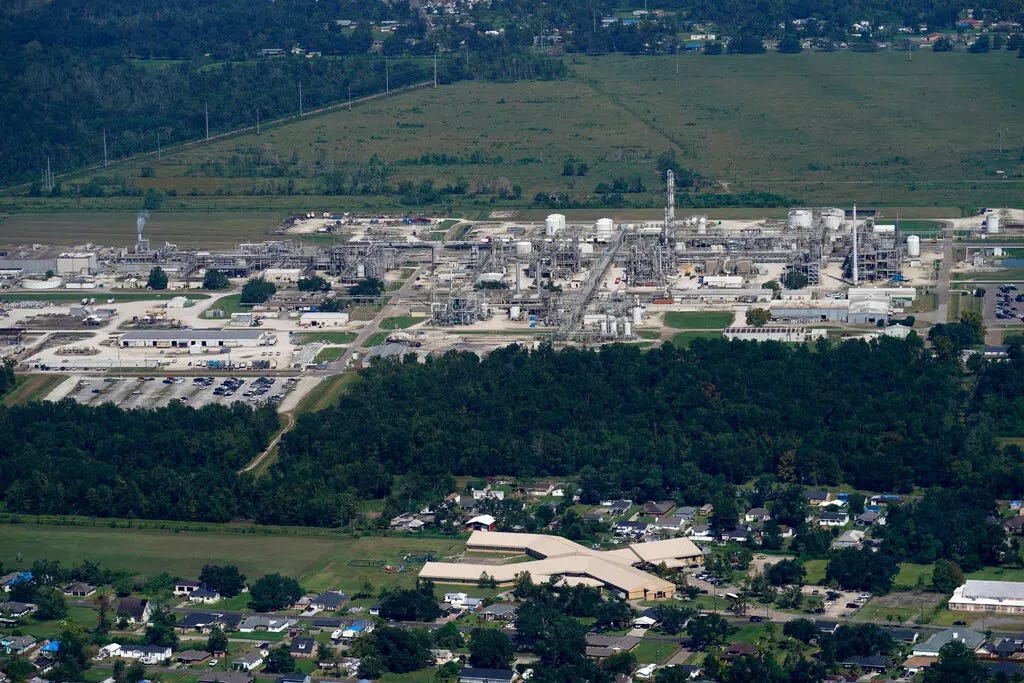
Dear Readers,
Last week, when I wrote about the increase in cancer rates for young people, I discussed the link between environmental pollution and cancer, and ended on an ominous note that mixed both warning with optimism:
These connections between the environment, animals, and our own health is a perfect example of One Health: we are all linked together inextricably. You cannot separate conservation and green initiatives from societal well-being. While this may seem daunting, progress is possible… Through the Clean Air Act and many other state and federal regulations, we have made great strides reducing air pollution and carbon emissions in the United States. The first step to solving a problem is admitting we have one. Hopefully through continued research and innovation we can identify the major causes of increasing cancer rates and work to reduce them.
So it was a timely and pleasant surprise when I read several articles this morning that the Biden Administration’s EPA has just announced the first new regulations for chemical plants that produce carcinogens since 2006:
More than 200 of the US’s chemical plants will be mandated to reduce toxic emissions linked to cancer to and better protect communities from hazardous pollution, the Biden administration announced on Tuesday.
The long-awaited rule finalized by the Environmental Protection Agency (EPA) will strengthen protections for communities living near industrial sites, especially along the Gulf coast.
The new update focuses on ethylene oxide, used to produce antifreeze, pesticides and sterilizing agents, as well as chloroprene, which is used to make synthetic rubber for shoes and wetsuits.
[…]
The last time the government updated the pollution limits from chemical plants was 2006. The strengthened rule would lower toxic pollutants by 6,200 tons a year, and slash ethylene oxide and chloroprene emissions by 80%. The new update under the Clean Air Act would also require fence-line monitoring of six toxic air pollutants: ethylene oxide, chloroprene, vinyl chloride, benzene, 1,3-butadiene and ethylene dichloride.
“This shows the administration’s commitment to the issues of environmental justice,” said Adam Kron, a senior attorney with Earthjustice. “This rule will reduce a lot of hazardous air pollutants. There will be less cancer based on these emissions, there will be lives saved.”
This is a major win for people all over the country, but particularly those in Louisiana, which has among the highest rate of cancer in the nation.
Residents living near the Denka/DuPont chemical plant in Louisiana’s “Cancer Alley” are exposed to air levels of chloroprene an eye-popping 755 times higher than the safe limit determined by the EPA!!
It should not be surprising then that those in St. John the Baptist Parish outside New Orleans—home to Laplace, LA and Reserve, LA—have nearly fifteen times the national average rate of cancer in the US. And, as tragically typical for this country, these communities are predominantly people of color and have much higher rates of poverty. To top it all off, their home values are underwater due to the well-known pollution, so most are unable to afford moving to escape these risks.
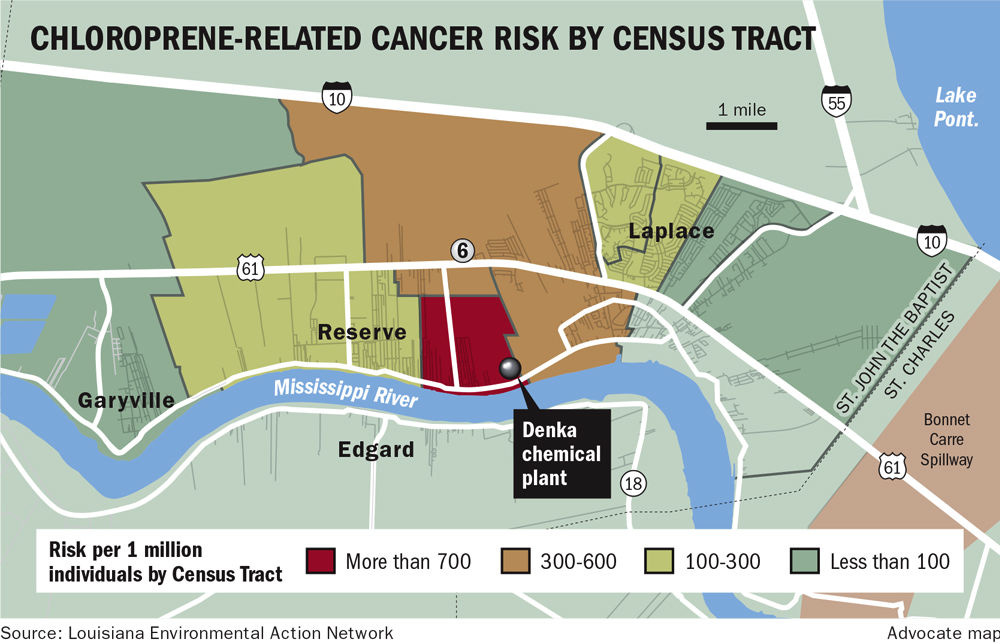
Local citizens in that Louisiana parish have been calling on the EPA to regulate these companies for years, including suing the owners of the Denka plant with the help of environmental advocacy groups. Today’s new rules are a long-overdue victory for those citizen activists. I hope their win gives us all hope that we can improve things if we refuse to accept the status quo and fight for policies to improve people’s lives.
I generally try to avoid politics on this newsletter, but I want to make a few points here. It is unquestionable that the only reason this new EPA regulation happened is because of the Biden Administration and Democrats in Congress. And unlike legislation that is signed into law, departmental regulations can change between successive administrations, so this reprieve may only be temporary.
This is not merely partisan hyperbole or spitballing hypothetical scenarios. Donald Trump, and the GOP more broadly, are actively hostile to environmental regulations. In just one term, his administration reversed over 100 rules protecting our air, water, and wildlife:
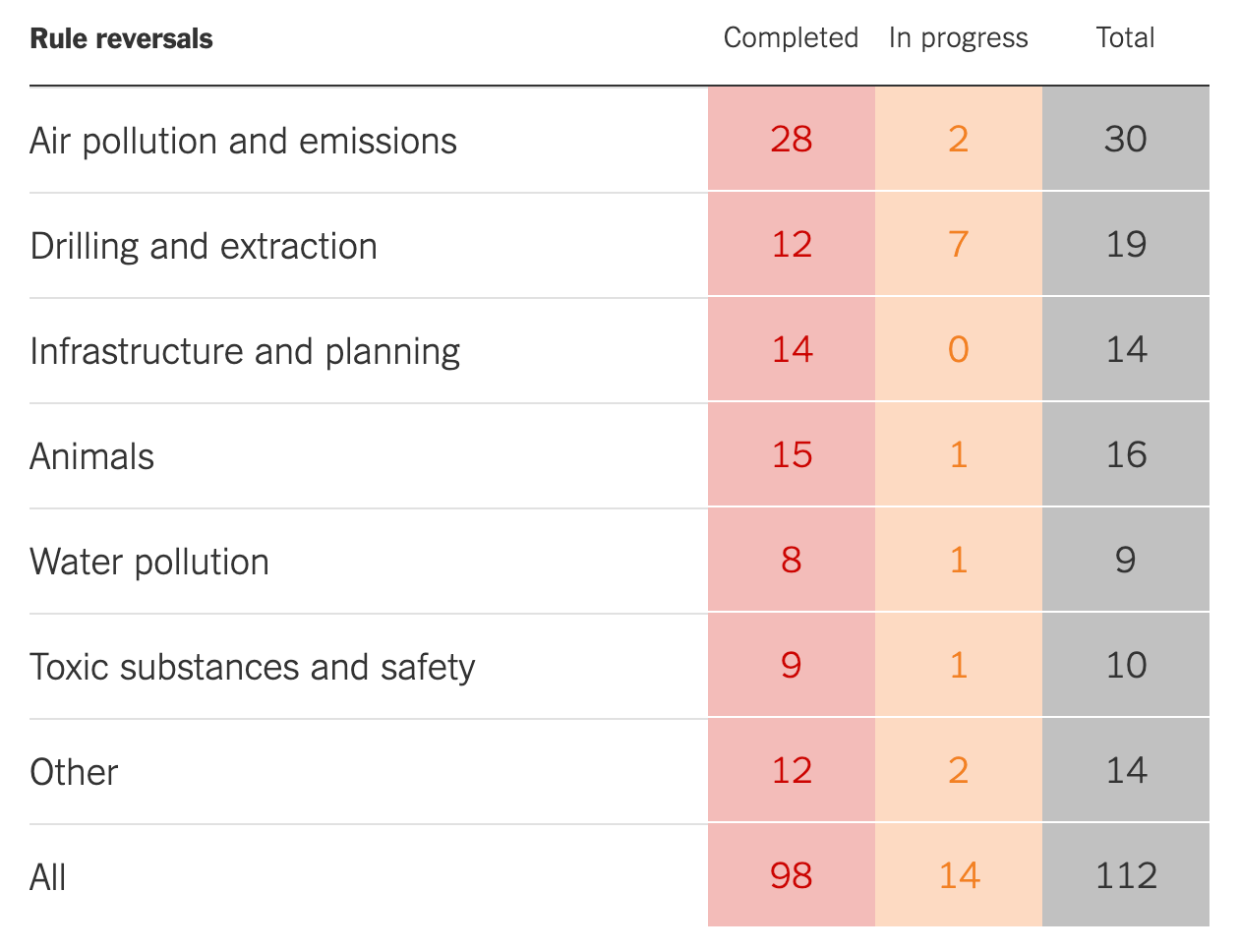
At the judicial level, back in 2022 the Supreme Court ruled 6-3—three of whom were appointed by Trump—against the EPA’s ability to regulate carbon emissions to combat climate change:
The issue before the court was how the EPA can regulate coal-fired power plants, which in this country are the single largest source of carbon emissions that cause climate challenge. The Obama administration set state-by-state carbon limits and encouraged states to rely less on coal and more on alternative energy sources. Even though the program was blocked by the courts, it met its targets 11 years ahead of schedule for the simple reason that it turned out coal was too expensive compared to other power generating sources.
But on Thursday, the Supreme Court turned thumbs down on any such systemic approach. Bringing to life what the court has called "the major questions doctrine," the court said that neither the EPA nor any other agency may adopt rules that are transformational to the economy--unless Congress has specifically authorized such a rule to address a specific problem, like climate change.
Of course, with Congress as dysfunctional as ever, this ruling means a severe blow to their ability to fight climate change and other environmental concerns. The Supreme Court is not done, either. This term, they are hearing a case that is poised to overturn the Chevron doctrine that would essentially cripple the ability of federal agencies to regulate much of anything:
Conservative Supreme Court justices on Wednesday voiced support for weakening the power of federal regulators, but it was not clear whether a majority would overturn a precedent that has guided American law for four decades over everything from the safety of food and drugs to environmental protection.
[…]
The court heard three and a half hours of arguments in two challenges brought by commercial fishermen to a fee requirement, though the facts of their cases were barely discussed in the courtroom.
Instead, the focus was on whether the court should overturn the 1984 case colloquially known as Chevron, a decision that has been the basis for upholding a wide range of regulations public health, workplace safety and consumer protections.
Keep in mind that Supreme Court justices have lifetime appointments, with an average term just under 30 years. If even one of the court’s moderate/liberal justices were to die or retire during a GOP administration, we would be facing a 7-2 conservative supermajority on the court for years, potentially even decades.
It is easy to get cynical about politics, especially in the US. Leaders from both parties continuously disappoint us with bad policies, corruption, and inaction. While I think the Democrats have the better record for helping average citizens, they are certainly not immune to lobbying and regulatory capture.
But we can’t let pessimism curdle into despair and apathy. The parties are different, and your voice does matter. It is crystal clear that a second Biden administration, ideally with a Democratic Congress, would advance environmental regulations to reduce carcinogens and fight climate change while the other side would work to roll back protections at every turn.
Many large, scary problems in this country are complicated and systemic, and individuals have little to no influence over them. However, we all get the power to determine who our leaders in government are through voting, and that choice can have enormous implications on our daily lives for years to come.
Stay informed, make sure you are registered to vote, and show up in November to tell your representatives you don’t want to see rampant pollution in our communities.




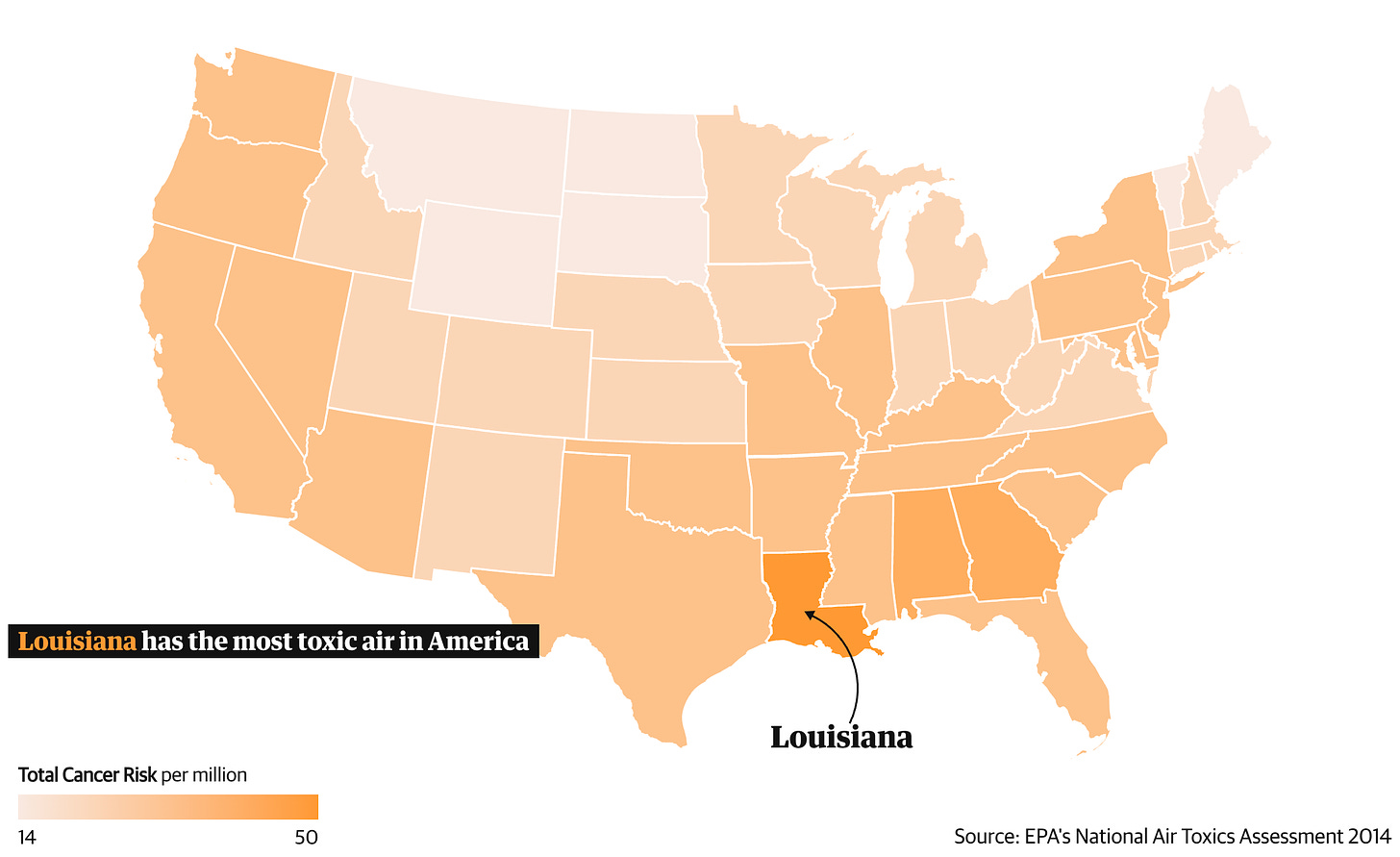
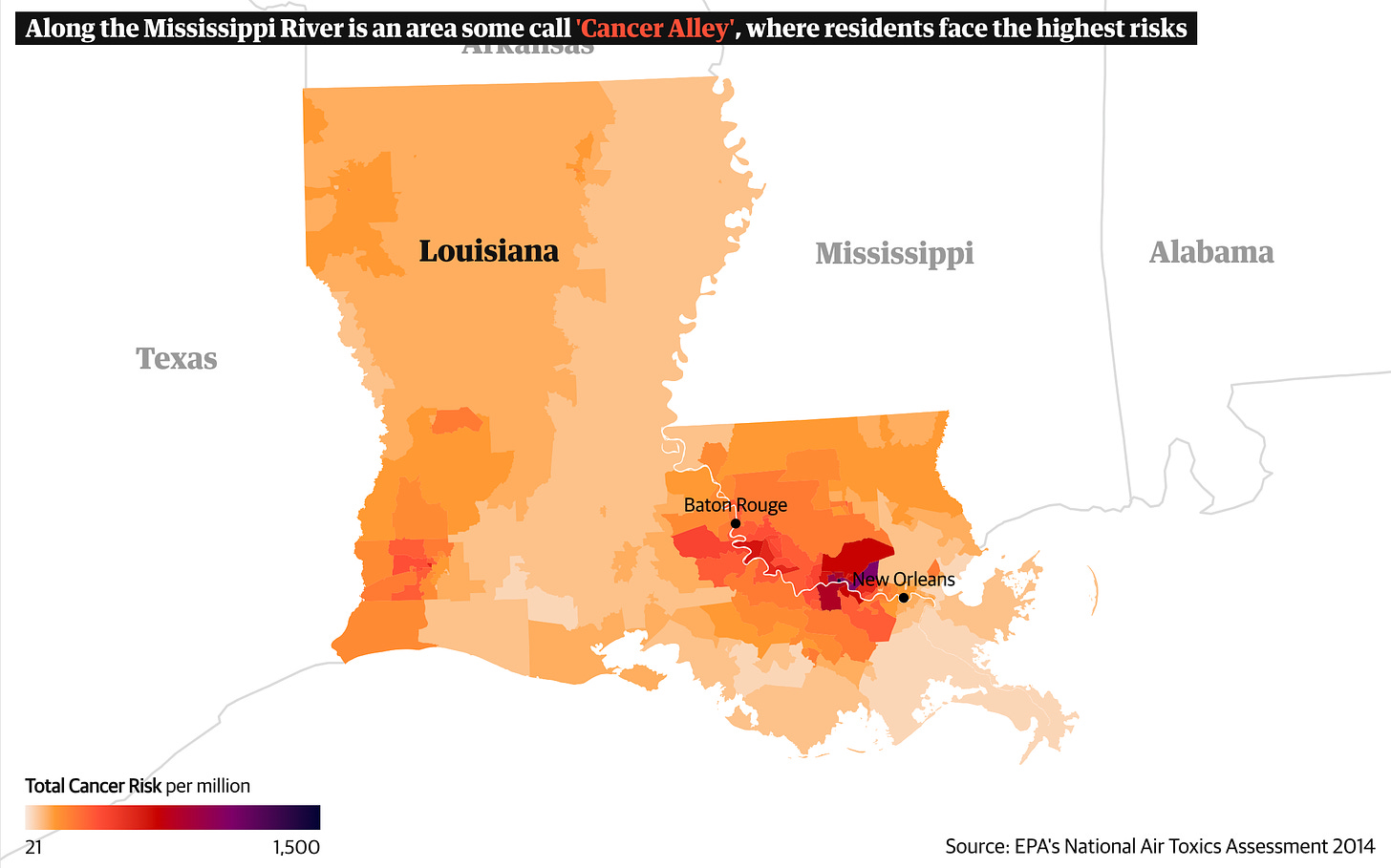
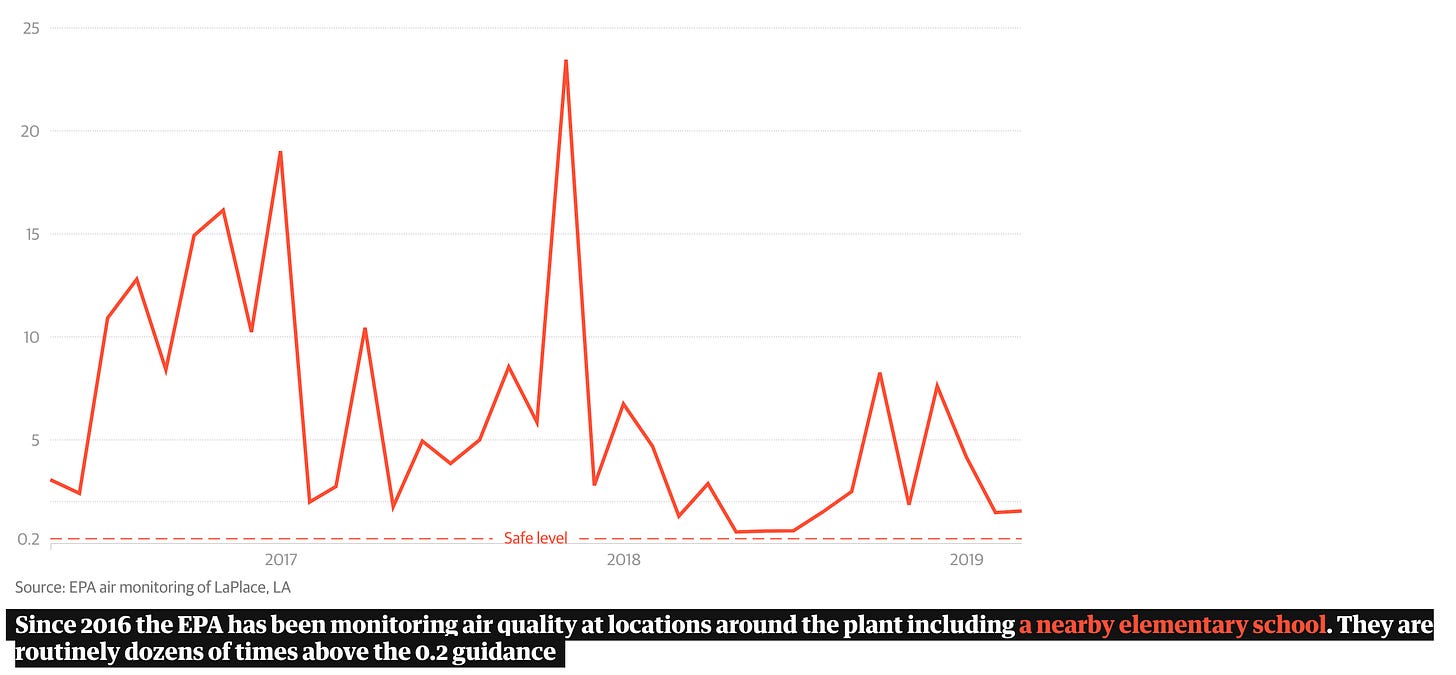

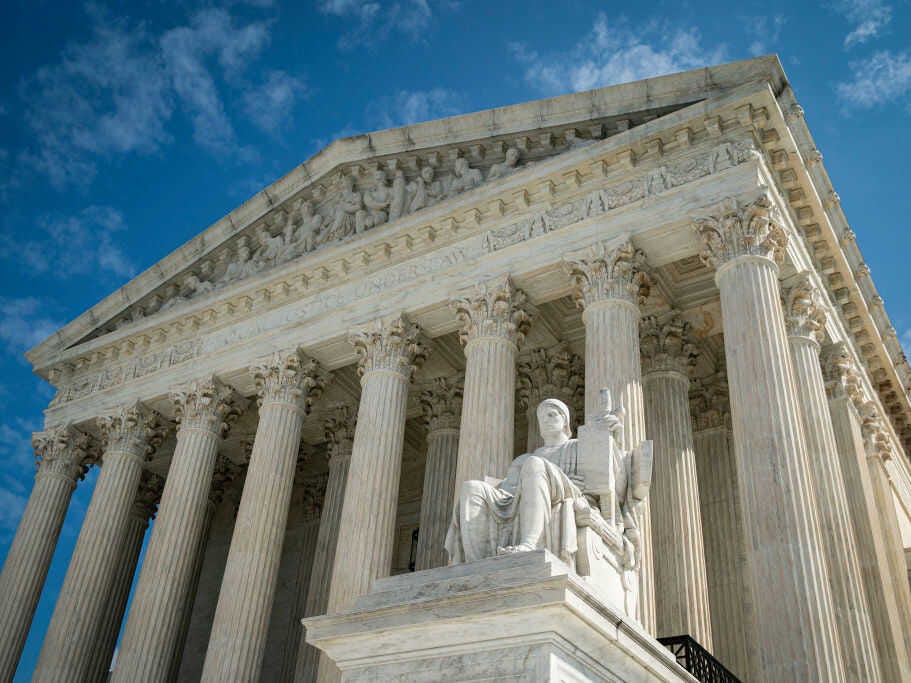
Excellent commentary. I too try very hard to avoid politics, but one can't deny cause and effect. More anti-government regulations officeholders en toto means fewer protective laws. Fewer protective laws causes decreases in public health. Very simple. At issue is whether commercial freedoms trump public health. I don't think they do.